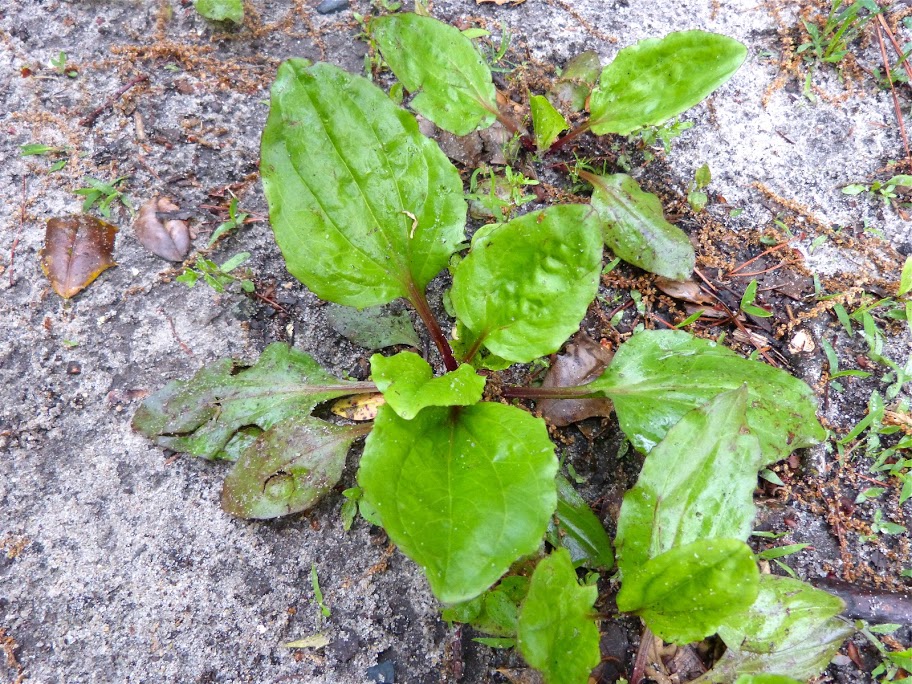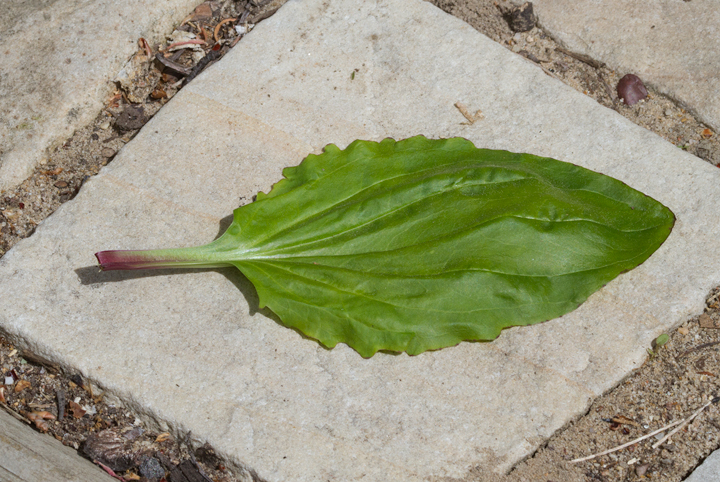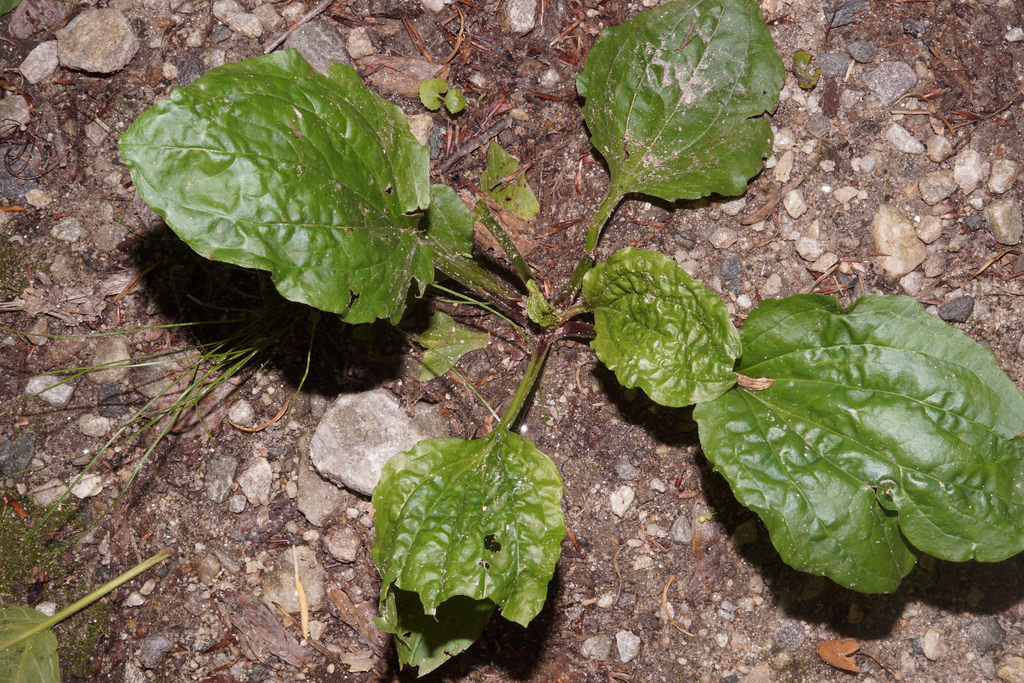Map Snapshot
























230 Records
Seasonality Snapshot
Source: Wikipedia
| Plantago rugelii | |
|---|---|

| |
| Scientific classification | |
| Kingdom: | Plantae |
| Clade: | Tracheophytes |
| Clade: | Angiosperms |
| Clade: | Eudicots |
| Clade: | Asterids |
| Order: | Lamiales |
| Family: | Plantaginaceae |
| Genus: | Plantago |
| Species: | P. rugelii
|
| Binomial name | |
| Plantago rugelii | |
| Synonyms[1] | |
|
Plantago kamtschatika Hook. | |
Plantago rugelii is an edible species of flowering plant in the plantain family, Plantaginaceae. It is native to North America, where it occurs in eastern Canada and the central and eastern United States. Its common names include American plantain, blackseed plantain, pale plantain, and Rugel's plantain.[2] The species name rugelii honors Ferdinand Ignatius Xavier Rugel (1806-1879),[3][4] a German-born botanist and pharmacist.[5]
-
Leaves sprouting in spring, showing purple leaf bases
-
Flowers
-
Immature seed pods. They are longer than those of Plantago major.
This perennial herb grows from a taproot and fibrous root system. Extract from the roots of this plant have been shown to inhibit the hatching of nematodes.[6] It produces a basal rosette of wide oval leaves with longitudinal veining and a somewhat waxy texture. The base of the petiole may be reddish or purple. A scape bears clusters of whitish flowers. The fruit is a capsule about half a centimeter long containing several seeds. It splits down the middle. Plantago major is very similar, but it lacks the red tinge on the petioles and its leaves are darker and waxier.[7]
Habitat
[edit]Plantago rugelii is commonly found in areas such as meadows, woodland borders, and stream banks, as well as in lawns and gardens and near paved areas.[8]
References
[edit]- ^ "Plantago rhodosperma Decne". Plants of the World Online. The Trustees of the Royal Botanic Gardens, Kew. n.d. Retrieved December 26, 2022.
- ^ "Plantago rugelii". Germplasm Resources Information Network. Agricultural Research Service, United States Department of Agriculture. Retrieved 21 January 2018.
- ^ "Plantago rugelii (Rugel's plantain)". Go Botany. New England Wildflower Society.
- ^ "Plantago rugelii". Plants of Wisconsin. Robert W. Freckmann Herbarium, University of Wisconsin–Stevens Point. Archived from the original on 2013-05-10.
- ^ "RUGEL, Ferdinand Ignatius Xavier". Index Collectorum. Herbarium Göttingen, Department of Systematic Botany, University of Göttingen.
- ^ Meyer, Susan L. F.; Zasada, Inga A.; Roberts, Daniel P.; Vinyard, Bryan T.; Lakshman, Dilip K.; Lee, Jae-Kook; Chitwood, David J.; Carta, Lynn K. (September 2006). "Plantago lanceolata and Plantago rugelii Extracts are Toxic to Meloidogyne incognita but not to Certain Microbes". Journal of Nematology. 38 (3): 333–338. ISSN 0022-300X. PMC 2586708. PMID 19259537.
- ^ "Blackseed Plantain: Plantago rugelii". Virginia Tech Weed Identification Guide. Archived from the original on 2013-09-22.
- ^ Hilty, John (2020). "Blackseed Plantain". Illinois Wildflowers.
External links
[edit]- Minnesota Wildflowers
- Kansas Wildflowers and Grasses
- Flora of Wisconsin, Wisconsin State Herbarium, University of Wisconsin–Madison
- Native Plant Database profile, Lady Bird Johnson Wildflower Center, University of Texas at Austin













